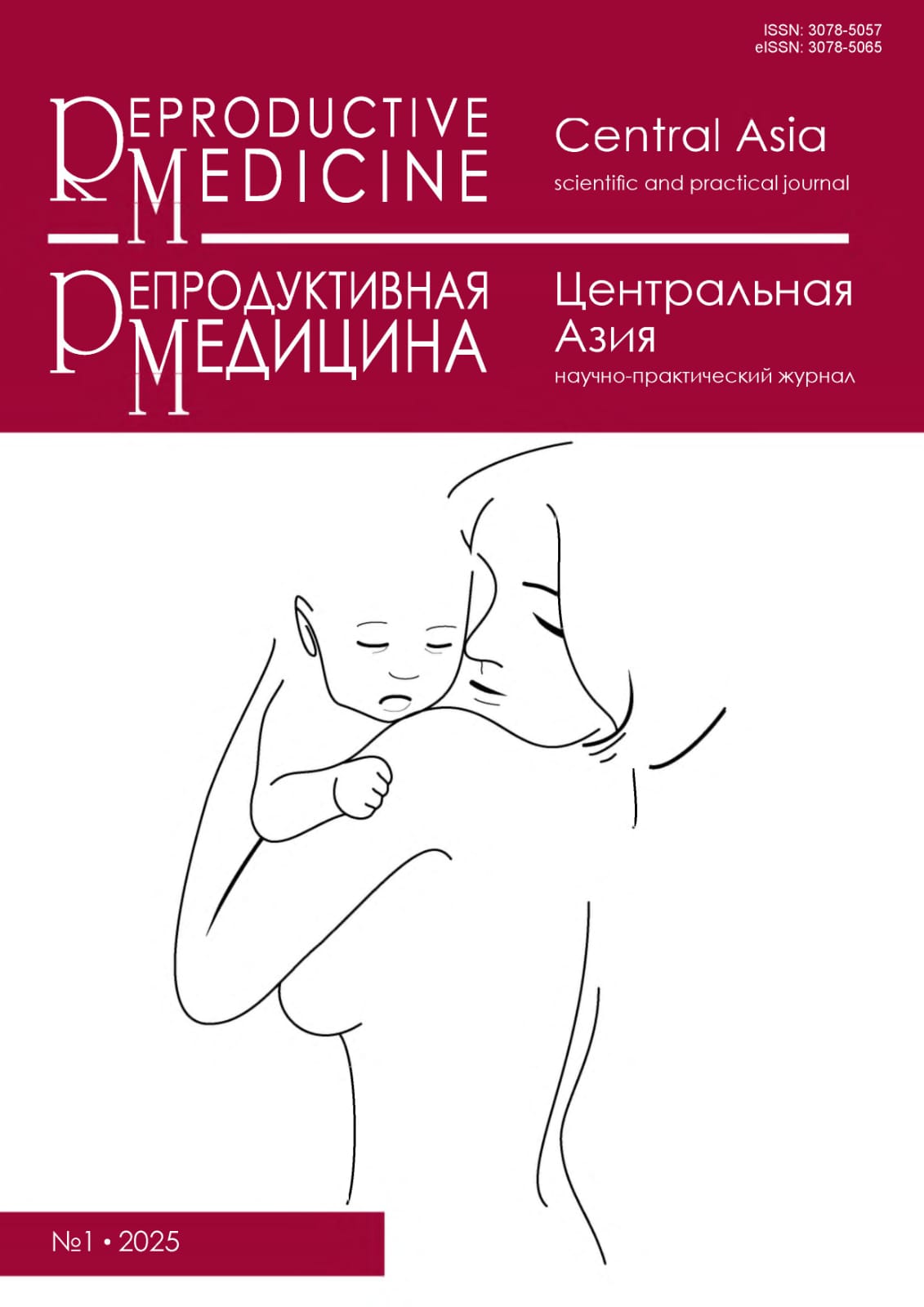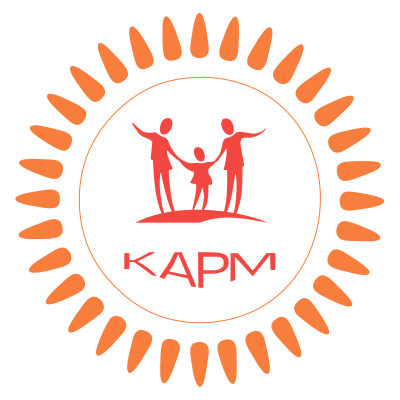Prevention and treatment of colorectal diseases in pregnant women in outpatient settings: A retrospective cohort study
DOI:
https://doi.org/10.37800/RM.1.2025.449Keywords:
pregnant women, trimester, coloproctological diseasesAbstract
Relevance: Colorectal diseases in pregnant women represent a significant medical concern, as physiological changes during gestation may contribute to their development. The prevalence of anorectal disorders, including hemorrhoids, anal fissures, and fecal incontinence, increases as pregnancy progresses, necessitating timely diagnosis and the development of effective preventive and therapeutic strategies.
The study aimed to assess the characteristics of the course of proctological diseases in pregnant women to improve their diagnosis and therapy in outpatient settings.
Methods: This retrospective cohort study involved 153 pregnant women referred for proctologist consultation at Polyclinic No. 3 in Karaganda from 2022 to 2024 with suspected proctological pathology or a previously established diagnosis. The methods used included collecting anamnesis, physical examination, and instrumental diagnostics (anoscopy, rectosigmoidoscopy, ultrasound examination). Group data were compared using Student's t-test for quantitative data and χ² test for categorical variables. The differences were reliable at p < 0.05. Statistical processing was performed using SPSS 26.0 software.
Results: The mean age of the involved pregnant women was 29.2±6.3 years. Most of them (48.4%) sought consultation in the third trimester. The most common colorectal conditions were hemorrhoids (37.5%), anal fissures (30.0%), and fecal incontinence (22.5%). The incidence of constipation significantly increased as pregnancy progressed (p<0.05). Anal fissures were more frequently diagnosed in the first trimester, whereas hemorrhoids and fecal incontinence were more prevalent in the second and third trimesters.
Conclusion: Pregnancy has a significant impact on the development and course of colorectal diseases, necessitating continuous monitoring, timely diagnosis, and preventive interventions. The findings emphasize the need for a multidisciplinary approach to managing pregnant women with anorectal pathology and the development of individualized prevention and treatment strategies.
References
Bužinskienė D., Sabonytė-Balšaitienė Ž., Poškus T. Perianal Diseases in Pregnancy and After Childbirth: Frequency, Risk Factors, Impact on Women's Quality of Life and Treatment Methods. Front Surg. 2022;9:788823.
https://doi.org/10.3389/fsurg.2022.788823
Soma-Pillay P, Nelson-Piercy C, Tolppanen H, Mebazaa A. Cardiovasc J Africa. 2016;27(2):89-94.
https://doi.org/10.5830/CVJA-2016-021
Picciariello A., Rinaldi M., Grossi U., Verre L., De Fazio M., Dezi A., Tomasicchio G., Altomare Donato F and Gallo G Management and Treatment of External Hemorrhoidal Thrombosis. Front Surg. 2022;9:898850.
https://doi.org10.3389/fsurg.2022.898850
Bhatia P, Chhabra S. Physiological and anatomical changes of pregnancy: Implications for anaesthesia. Indian J Anaesth. 2018;62(9):651-657.
https://doi.org/10.4103/ija.IJA_458_18
Lohsiriwat V. Treatment of hemorrhoids: A coloproctologist's view. World J Gastroenterol. 2015;21(31):9245-9252.
https://doi.org/10.3748/wjg.v21.i31.9245
Salusso P, Testa V, Mochet S, Arezzo A, Allaix ME, Salzano A, Morino M, Mistrangelo M. Management of hemorrhoidal disease in special conditions: A word of caution. Rev Recent Clin Trials. 2021;16(1):22-31.
https://doi.org/10.2174/1574887115666200406121308
Sabonyte-Balsaitiene Z, Poskus T, Jasiunas E, Ramasauskaite D, Drasutiene G. Incidence and risk factors of perianal pathology during pregnancy and postpartum period: A prospective cohort study. J Clin Med. 2024;13(8):2371.
https://doi.org/10.3390/jcm13082371
Baud D, Sichitiu J, Lombardi V, De Rham M, Meyer S, Vial Y, Achtari C. Comparison of pelvic floor dysfunction 6 years after uncomplicated vaginal versus elective cesarean deliveries: A cross-sectional study. Sci Rep. 2020;10(1):21509.
https://doi.org/10.1038/s41598-020-78625-3
Schlichtemeier S, Engel A. Anal fissure. Aust Prescr. 2020;39(1):14-17.
https://doi.org/10.18773/austprescr.2016.007
Kost K, Lindberg L. Pregnancy intentions, maternal behaviors, and infant health: Investigating relationships with new measures and propensity score analysis. Demography. 2015;52(1):83-111.
https://doi.org/10.1007/s13524-014-0359-9
Leborne P, de Tayrac R, Zemmache Z, Serrand C, Fabbro-Peray P, Allegre L, Vintejoux E. Incidence of obstetric anal sphincter injuries following breech compared to cephalic vaginal births. BMC Pregn Childbirth. 2023;23(1):317.
https://doi.org/10.1186/s12884-023-05595-5
Spinelli A, Laurenti V, Carrano FM, Gonzalez-Díaz E, Borycka-Kiciak K. Diagnosis and treatment of obstetric anal sphincter injuries: New evidence and perspectives. J Clin Med. 2021;10(15):3261.
https://doi.org/10.3390/jcm10153261
Thubert T, Cardaillac C, Fritel X, Winer N, Dochez V. Définitions, épidémiologie et facteurs de risque des lésions périnéales du 3e et 4e degrés. RPC Prévention et protection périnéale en obstétrique CNGOF [Definition, epidemiology and risk factors of obstetric anal sphincter injuries: CNGOF Perineal Prevention and Protection in Obstetrics Guidelines]. Gynecol Obstet Fertil Senol. 2018;46(12):913-921. French.
https://doi.org/10.1016/j.gofs.2018.10.028
Jansson MH, Franzén K, Hiyoshi A, Tegerstedt G, Dahlgren H, Nilsson K. Risk factors for perineal and vaginal tears in primiparous women – the prospective POPRACT-cohort study. BMC Pregn Childbirth. 2020;20(1):749.
https://doi.org/10.1186/s12884-020-03447-0
Goto Y, Uchino M, Horio Y, Kusunoki K, Minagawa T, Kuwahara R, Kimura K, Kataoka K, Beppu N, Ikeda M, Ikeuchi H. Delivery mode after ileal pouch-anal anastomosis among pregnant women with ulcerative colitis. J Anus Rectum Colon. 2021;5(4):419-425.
https://doi.org/10.23922/jarc.2021-022
Wolloff S, Moore E, Glanville T, Limdi J, Kok KB, Fraser A, Kent A, Mulgaba K, Nelson-Piercy C, Selinger C. Provision of care for pregnant women with IBD in the UK: The current landscape. Frontline Gastroenterol. 2020;12(6):487-492.
https://doi.org/10.1136/flgastro-2020-101546
Laube R, Paramsothy S, Leong RW. Review of pregnancy in Crohn's disease and ulcerative colitis. Ther Adv Gastroenterol. 2021;14:17562848211016242.
https://doi.org/10.1177/17562848211016242
Larsson C, Hedberg CL, Lundgren E, Söderström L, Tunón K, Nordin P. Anal incontinence after caesarean and vaginal delivery in Sweden: A national population-based study. Lancet. 2019;393(10177):1233-1239.
https://doi.org/10.1016/S0140-6736(18)32002-6
Guzmán Rojas RA, Salvesen KÅ, Volløyhaug I. Anal sphincter defects and fecal incontinence 15-24 years after first delivery: A cross-sectional study. Ultrasound Obstet Gynecol. 2018;51(5):677-683.
https://doi.org/10.1002/uog.18827
Министерство здравоохранения Республики Казахстан. Об утверждении стандарта организации оказания акушерско-гинекологической помощи в Республике Казахстан: Приказ № ҚР ДСМ-92 от 26 августа 2021 года. Зарегистрирован в Министерстве юстиции Республики Казахстан 28 августа 2021 года № 24131. ИПС “Әділет” [Internet]. [Дата цитирования: 22.03.2025]. Доступно по адресу:
Ministry of Health of the Republic of Kazakhstan. On approval of the standard for organizing the provision of obstetric and gynecological care in the Republic of Kazakhstan: Order No. ҚР ДСМ-92 dated 2021 Aug 26. Registered with the Ministry of Justice of the Republic of Kazakhstan on 2021 Aug 28, No. 24131. IPS "Adilet" [Internet]. [cited 2025 Mar 22]. Russian. Available from:
https://adilet.zan.kz/rus/docs/V2100024131
Jee SB, Sawal A. Physiological changes in pregnant women due to hormonal changes. Cureus. 2024;16(3):e55544.
https://doi.org/10.7759/cureus.55544
Sun L, Li W, Sun F, Geng Y, Tong Z, Li J. Intra-abdominal pressure in third trimester pregnancy complicated by acute pancreatitis: An observational study. BMC Pregn Childbirth. 2015;15:223.
https://doi.org/10.1186/s12884-015-0651-8
Salari N, Mohamadi S, Hemmati M, Fallahi A, Rasoulpoor S, Zarei H, Shohaimi S, Mohammadi M. Global prevalence of constipation during pregnancy: A systematic review and meta-analysis. BMC Pregn Childbirth. 2024;24(1):836.
https://doi.org/10.1186/s12884-024-07057-y
Malesza IJ, Bartkowiak-Wieczorek J, Winkler-Galicki J, Nowicka A, Dzięciołowska D, Błaszczyk M, Gajniak P, Słowińska K, Niepolski L, Walkowiak J, Mądry E. The dark side of iron: The relationship between iron, inflammation and gut microbiota in selected diseases associated with iron deficiency anaemia – A narrative review. Nutrients. 2022;14(17):3478.
https://doi.org/10.3390/nu14173478
Суханов А.А., Дикке Г.Б., Кукарская И.И. Дисфункция тазового дна у беременных женщин в третьем триместре. Акушерство и гинекология. 2017;11:123-128.
Sukhanov AA, Dicke GB, Kukarskaya II. Pelvic floor dysfunction in pregnant women in the third trimester. Akusherstvo i ginekologiya. 2017;11:123-128. Russian.
https://dx.doi.org/10.18565/aig.2017.11.123-128
Baruch Y, Manodoro S, Barba M, Cola A, Re I, Frigerio M. Prevalence and severity of pelvic floor disorders during pregnancy: Does the trimester make a difference? Healthcare (Basel). 2024;11(8):1096.
Downloads
Published
How to Cite
Issue
Section
License
Copyright (c) 2025 The rights to a manuscript accepted for publication are transferred to the Journal Publisher. When reprinting all or part of the material, the author must refer to the primary publication in this journal.

This work is licensed under a Creative Commons Attribution-NonCommercial-NoDerivatives 4.0 International License.
The articles published in this Journal are licensed under the CC BY-NC-ND 4.0 (Creative Commons Attribution – Non-Commercial – No Derivatives 4.0 International) license, which provides for their non-commercial use only. Under this license, users have the right to copy and distribute the material in copyright but are not permitted to modify or use it for commercial purposes. Full details on the licensing are available at https://creativecommons.org/licenses/by-nc-nd/4.0/.




